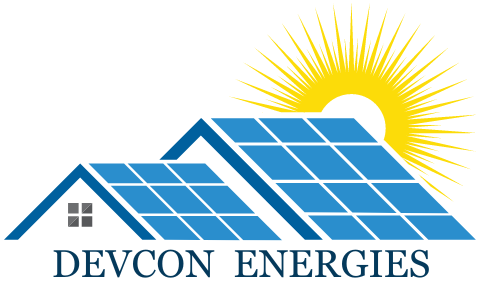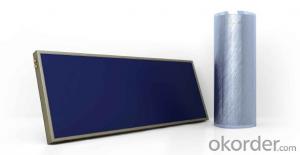Integrative Pressurized Stainless Steel Solar Water Heater Model SP-HS
Description
1.Structure of Pressurized Stainless Steel Solar Water Heater Model SP-HSÿDescription:Pressurized Stainless Steel Solar Water Heater Model SP-HSÿis composed by the following parts as shown in the graphic1.Water inletÿÿ2.Water outletÿ3.P/T Valve4.Electrical heater5.Drain vent6.Sensor hole7. Heat exchange tubeÿ2.Main Features of the Pressurized Stainless Steel Solar Water Heater Model SP-HS:ÿ(1)Glass vacuum tube solar collector, high temperature,antifreeze,vacuum insulationÿ(2)Copper heat pipe,Start up quickly,transfers heat quickly, low start-up temperature,low temperature resistantÿ(3)ÿFood-grade stainless-steel SUS304 2B inner tank,full-automatic welding technology,under the protection of magnesium rod,it can increase of service lifeÿ(4)High pressure polyurethane foaming insulation,as the prefect density and the thermal conductivity coefficient is small, so it can provide effective heat preservationÿ(5)Gravity assisted heat pipe, unilateral heat transfer,high efficiency,low heat lossÿ3.ÿÿPressurized Stainless Steel Solar Water Heater Model SP-HS Images:ÿ4.ÿ Pressurized Stainless Steel Solar Water Heater Model SP-HS Specifications:Specification & modelSP-H-15SP-H-18SP-H-20SP-H-24SP-H-25SP-H-30Tube QTY?pcs?151820242530Tube spacing??757575757575WATER TANKNet Volume of Storage Tank?L?125145160190200235Diamater of inner/outer Tank???í360/í470í360/í470í360/í470í360/í470í360/í470í360/í470material and thickness of inner tank???SUS304 /t1.2SUS304 /t1.2SUS304 /t1.2SUS304 /t1.2SUS304 /t1.2SUS304 /t1.2material of outer tankstainless steelstainless steelstainless steelstainless steelstainless steelstainless steelmaterial of insulationpolyurethanepolyurethanepolyurethanepolyurethanepolyurethanepolyurethaneSize of electrical heater hole11/4?11/4?11/4?11/4?11/4?11/4?Cold water inlet hole3/4?3/4?3/4?3/4?3/4?3/4?Hot water outlet hole3/4?3/4?3/4?3/4?3/4?3/4?T/P valve hole3/4?3/4?3/4?3/4?3/4?3/4?Drain vent hole and Magnisium hole3/4?3/4?3/4?3/4?3/4?3/4?Sensor hole1/2?1/2?1/2?1/2?1/2?1/2?Vacuum TubeDiameter/Length???í58/1800í58/1800í58/1800í58/1800í58/1800í58/1800MaterialHigh boron and silicon glass 3.3High boron and silicon glass 3.3High boron and silicon glass 3.3High boron and silicon glass 3.3High boron and silicon glass 3.3High boron and silicon glass 3.3Outside thickness???1.81.81.81.81.81.8Inside thickness???1.61.61.61.61.61.6Light transmission rateò0.90ò0.90ò0.90ò0.90ò0.90ò0.90Vacuum degree ?Pa??10^-2?10^-2?10^-2?10^-2?10^-2?10^-2Coating absorptionò0.90ò0.90ò0.90ò0.90ò0.90ò0.90Coating emittanceó0.07ó0.07ó0.07ó0.07ó0.07ó0.07Average heat loss coefficientó0.75W/(?ú?)ó0.75W/(?ú?)ó0.75W/(?ú?)ó0.75W/(?ú?)ó0.75W/(?ú?)ó0.75W/(?ú?)Frame2 feets ( left-to-right )3 feets ( left-middle-right )MaterialGalvanized steel t1.2Galvanized steel t1.2Galvanized steel t1.2Galvanized steel t1.2Galvanized steel t1.2Galvanized steel t1.2Angle45ø45ø45ø45ø45ø45øTube support Specification/hole distance??í58/75í58/75í58/75í58/75í58/75í58/75Accessories?Tube sealing ringSilicon rubber/í58Silicon rubber/í58Silicon rubber/í58Silicon rubber/í58Silicon rubber/í58Silicon rubber/í58Tube dusting ringsSilicon rubber/í58Silicon rubber/í58Silicon rubber/í58Silicon rubber/í58Silicon rubber/í58Silicon rubber/í58Tube holderABS/í58ABS/í58ABS/í58ABS/í58ABS/í58ABS/í58Item Size??aÿÿ (?)138516101760206021352510bÿÿ (?)111013351485178518602235cÿÿ (?)170017001700170017001700c/2 (?)??????892.59301255dÿÿ (?)143014301430143014301430ÿÿ5.ÿÿ FAQ(1). How do I protect my solar system during subzero temperatures?
If you have a system that is operating in areas with subzero temperatures then freeze protection must be implemented. The easiest means of preventing freezing is to use a controller with a low temperatures setting, so when the manifold temperature drops below a certain pre-set temperature (5oC/40oF), the pump will circulate, warming the collector with water from the bottom of the storage tank. The pump will not run continually, just periodically, the frequency of which will depend on the outside temperature. In extremely cold areas, a closed loop using a glycol/water mix may be appropriate.
(2). Will water be heated on a cloudy day?
Yes. Although the heat output of the solar collector is reduced on overcast days it will still be able to provide heating. If it is a heavily clouded day or raining, then more gas or electric boosting may be required to maintain water at the required temperature. This system will be automated so you don’t have to worry about running out of hot water on a rainy day.




